Basement floors can cause a challenge to many homeowners because of the numerous potential problems and issues that affect the flooring choice. Whether you go with cheap durable basement flooring or something elegant, determine if waterproofing basement floors is necessary. Mold and mildew resistant basement flooring options abound. Your choices include laminate flooring, painting your basement floors, linoleum or vinyl flooring over concrete (tiles or rolls), wood, and even tiles. The best basement flooring really depends on you. Our basement flooring recommendations are that you evaluate your basement and your needs, get lots of basement flooring ideas, and proceed.
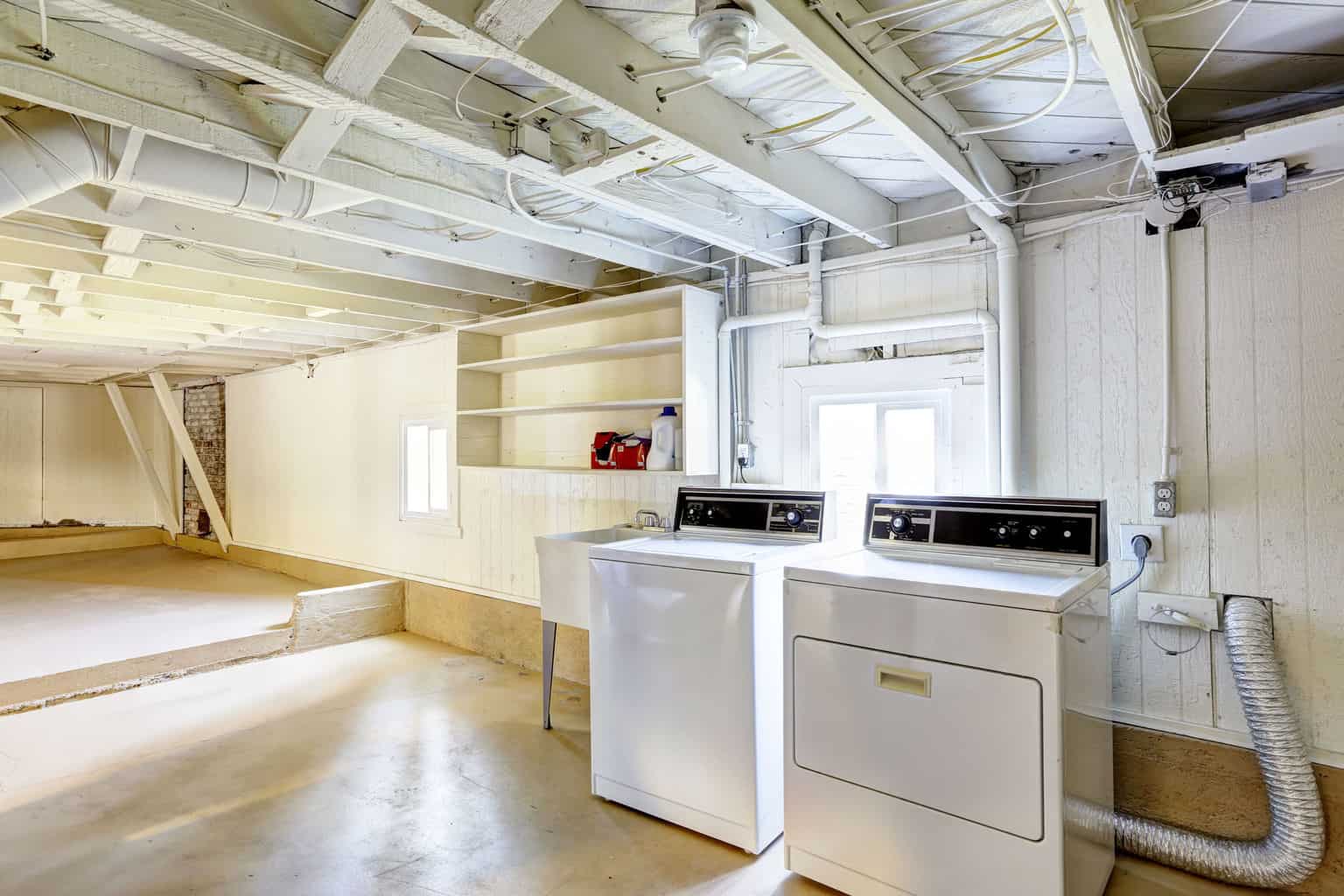
Do you have a basement that looks like a cave? Changing the flooring in your basement can make your basement look more like a room than a dark, dingy cave. There are lots of basement flooring ideas, all you have dot do is sort through the basement flooring options and make a decision!
What Flooring Option Is Best For Your Basement?
Adding flooring can brighten any room and can create interest and a feeling of being welcome. There are so many flooring options that you can use in the basement to create a room that everyone will love spending time in that the only problem may be trying to decide between the options! Here are some basement flooring recommendations we’ve found through the years and various homes,
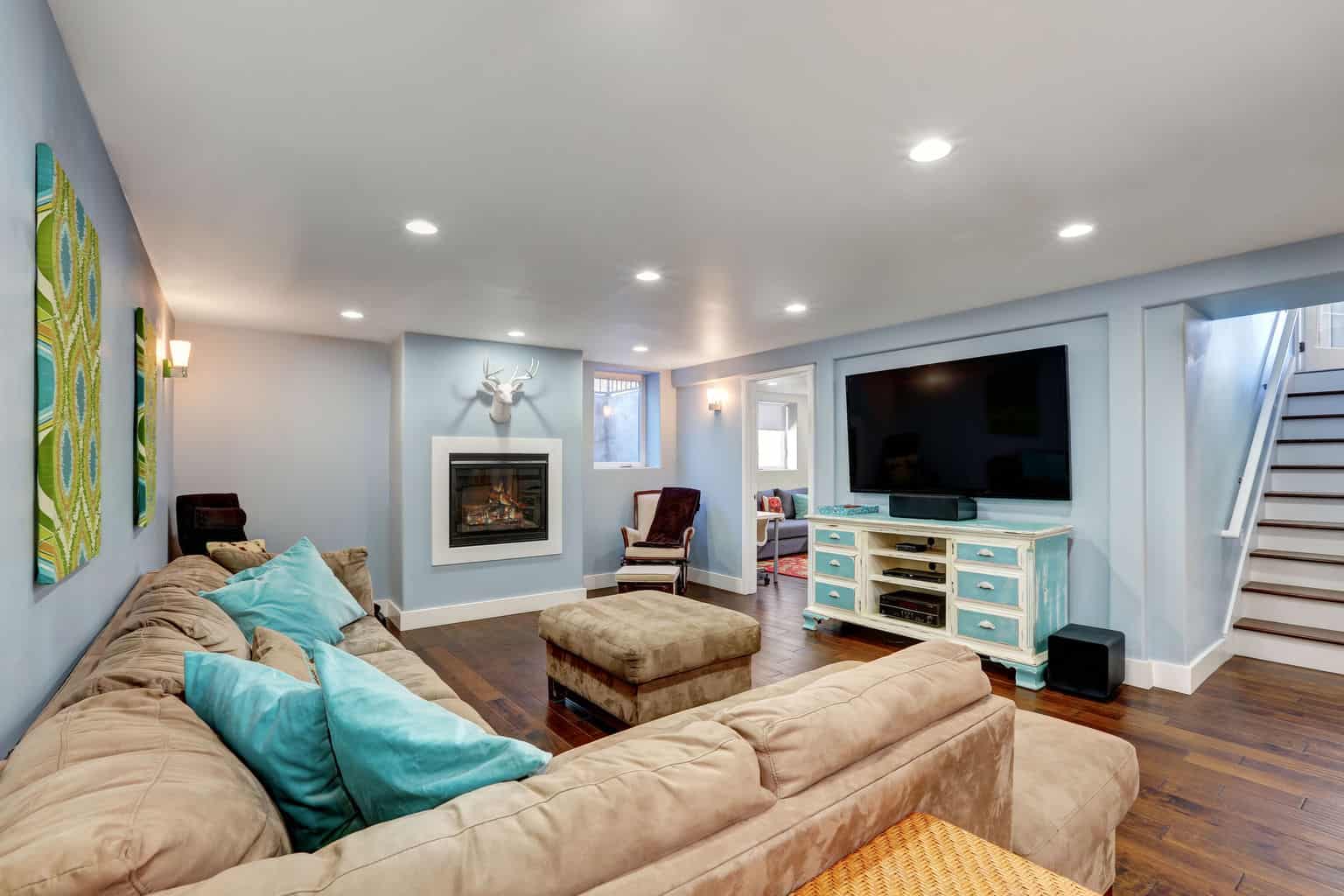
Your question, “what is a good flooring for a concrete basement” has many answers, all guided by the basement uses and your needs, your geographic location and basement style. You first need to ask yourself a few questions. What is the basement area going to be used for? Family room? Bedroom or office? A game room perhaps. If it is going to be used for a family room, for example, then you will want to have flooring that is durable and easy to clean. A bedroom or office space does not have to be as easy to clean as a playroom so can handle a different flooring. A game room needs to be durable. Where are you located? In an area with a high water table or tendency for flooding? Is your location dry, leaving you with a water-proof basement? And is the basement subterranean or walk-out? Each basement style will have its own criteria for how the space is going to be used. Determining the use will help you evaluate how much traffic and what kind of activity the room is going to get. Then you can make an informed decision on flooring that will be durable and last for years.
Cracked basement floors may need repairing before you do anything with your do anything further with your basement flooring. Waterproofing the concrete may be important too.
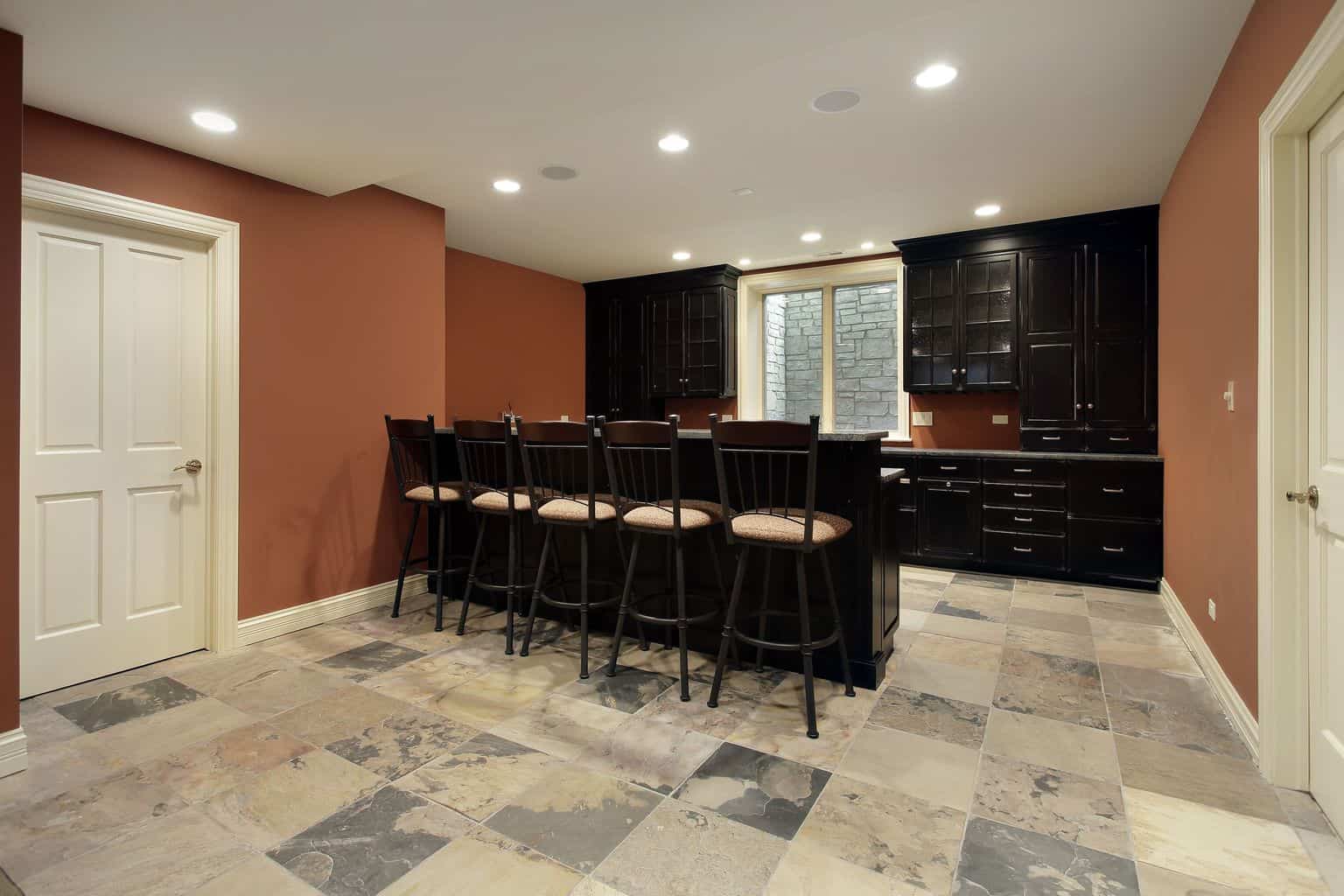
If you need cheap durable basement flooring, you have several different options. You could consider painting basement floors to save money. You could even try a faux finish that will make the concrete or cement look like more expensive stone flooring. Stenciling concrete basement floors can let them look like they have expensive oriental rugs or parquet tiles. Decorating concrete basement floors should not be scary — you never know, your floors could be the envy of the neighborhood! Paint is an easy fix to any decorating problem. And don’t forget that after you paint or stain your floor to take care of sealing the basement floor.
If you are looking for a floor that will turn your basement into a masterpiece, then you may want to consider installing laminate flooring in the basement. Using laminate flooring for basement floors instantly creates a feeling of warmth to a room. Laminate flooring in the basement works great if the basement is a dry space. As long as your concrete or cement basement floor is sealed and free of cracks, you should be able to install most laminate flooring brands.
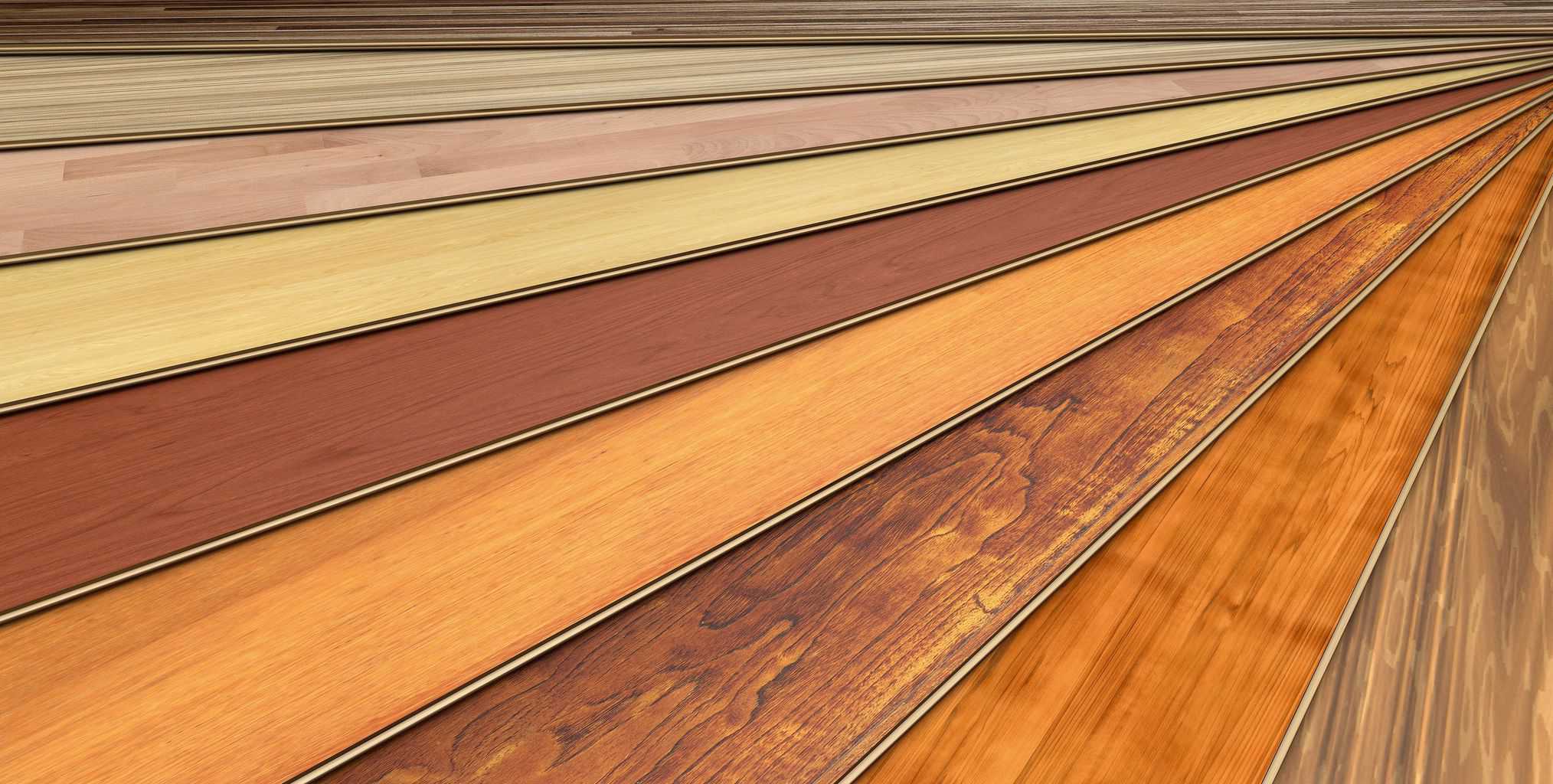
Another option to think about is basement tile flooring. Tile flooring comes in many different colors and materials and you are sure to find the one that will make your basement look great! From peel and stick tile to ceramic tile, you will find the one that is right for you and your budget. You can go with an all-over color, or design a pattern and lay the tiles to create the design. If you already have tiles on the floor, but they are tired or worn out, you can cover them with carpet, laminate, or maybe even more tiles. Painting tile floors is another interesting option for you.
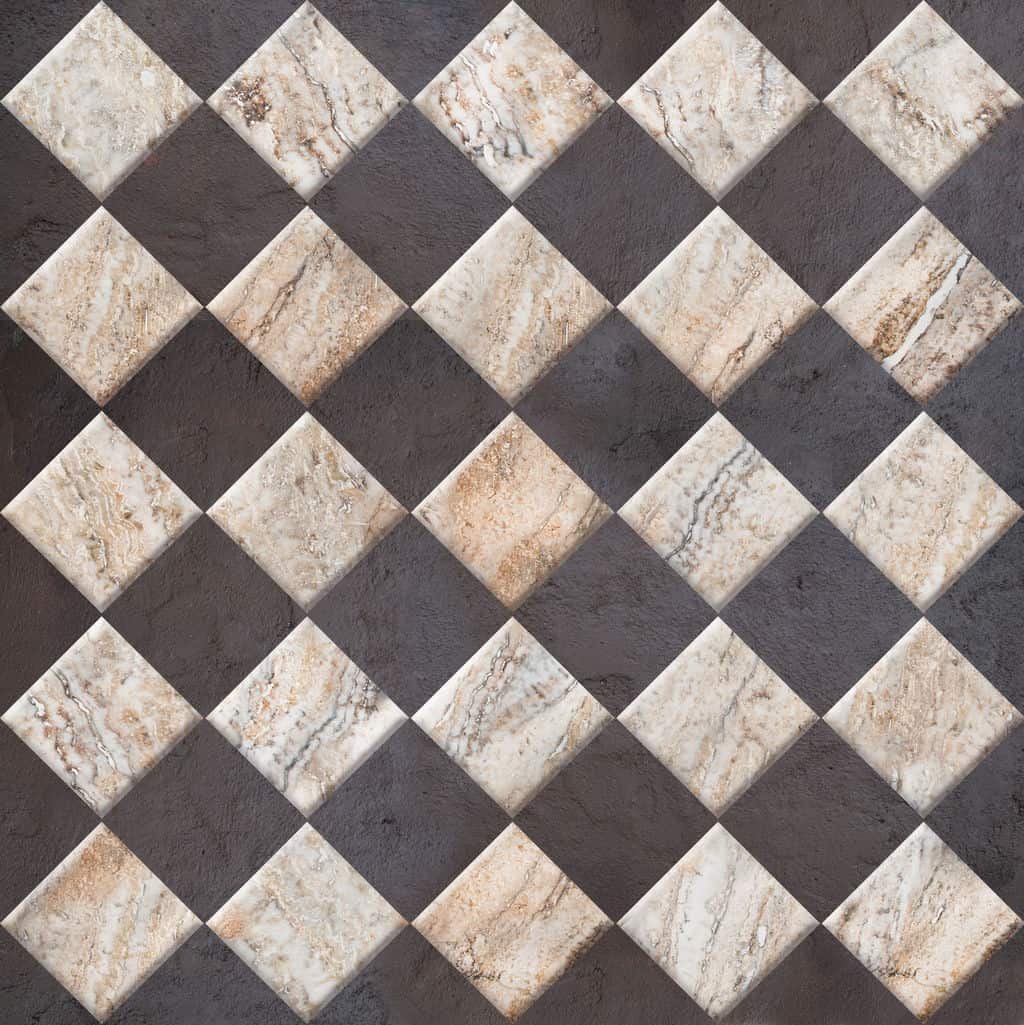
Prepare Your Basement For New Flooring
Before you choose the flooring for your basement, make sure that you have prepared your floors correctly. Waterproofing basement floors is very important because of their direct contact with the ground and the possibility of ground moisture seeping in. Concrete can act like a sponge and draw water up into the room if it is not sealed. This moisture can not only ruin flooring, but also causes mold or mildew problems. Be sure that your concrete or cement basement flooring and walls are waterproof to protect your basement flooring choice. Consider mold and mildew resistant basement flooring options if you have lots of ground moisture.
Once you decide what the basement is going to be used for and make sure that it is watertight, then you will be ready to choose the flooring. The flooring choice is entirely up to you and your budget. There are many different flooring options for basements now so you should be able to find exactly what you are looking for!

Hi Karen,
You need to try to remove the old. My concern is there may be asbestos in the adhesive, very common for back in the 60’s-70’s. I wouldn’t be suprised if it were in the old tile too. The important thing is to keep it wet when removing the old adhesive – if you’re lucky, simply using hot water and a scraper will do the trick, that way you won’t have to use chemicals or spend the extra money.
You have to remove the old adhesive, otherwise your new tiles might appear bumpy from the old hard adhesive underneath.
Just be careful to avoid exposure to the asbestos – it’s dangerous when the tiny particles become airborn, you can breath them in and risk some very serious health problems. I’m not trying to scare you…….well, ok, yes I am. I suggest you read up more on the dangers of asbestos and how to properly remove asbestos containing adhesive. There are kits that you can buy at your major home improvement stores to test for asbestos too. I would highly suggest you invest the small amount of money to check this.
Do you know if you can put a laminate flooring down on a floor that has radiant heating in it? It’s for our unfinished basement floor.
Hi Tammy,
Whew! An easy question today!
The answer: Yes!
We are thinking of just painting our basement floor. Our basement is being remodeled professionally though. It has a walk out door, we would like to use it as a game room and study. We have a 10 and 11 year old that will soon be teens with friends. We want the rooms to look “completed ” though when the contractor is done. Any suggestions?
Hi Dick,
I have a page about painting floors here.
We have begun the process of finishing the basement of our townhome. It is a below-ground level basement, but it does have a door leading to steps that climb up into our backyard. We do not have a huge water issue, although we have to run a dehumidifier in the warm months otherwise it smells musty. The only time we have had water issues, is when the drain outside the back door is blocked with leaves, and in a heavy downpour water overflows into the basement. We have to monitor this diligently.
we would like to put in carpeting in at least the front half of our basement (opposite side from the door), because we plan to use that side as a play area for our children. The back half (towards the backdoor) we would be using as the TV/entertainment side and were thinking of just painting and throwing down a good rug on the floor. In my Internet research, I have learned that installing carpets is perfectly do-able, provided certain precautions (subflooring,etc) are taken. I was looking at some systems, like DriCore and ThermalDry. Do you have an opinion about these or others? And also, would it be possible to install the subfloor and carpet on half the basement floor and leave the other half bare? If so, how would we finish the edges? Do you have any other suggestions? We definitely need carpeting in one half, but are hoping to reduce costs by not installng it all over (and certainly not near the door)
I hope questions are clear. Thank you! This is a great website!
Shabana
Hi Shabana,
If you use DriCore and ThermalDry (both good systems), this will cause your floor to be different heights.
I never recommend carpeting in areas that have moisture issues – they harbor too many allergens which seem to get worse with moisture – even moisture in the air. Think mold, mildew, bacteria….. you get the idea.
You do have a water problem and really need to address it properly. French drains might help, having a gutter guard system (or something similar) would help. Sealing the concrete (vapor barrier) would help.
We are interested in finishing our walkout basement. We are concerned about the flooring type we should go with. The basement floor is built on concrete slabs that so far had arised about an inch higher than the foundation of the house as well as at the entrance of the patio door. It has cracks in the joints and also has arised in some of four joints of slabs making the floor uneven (like a little volvano rising). Carpeting is an option but having kids going in and out on snow days is not the best option. We were thinking about engineering hardwood flooring but with the uneven floor we do not know if it may works. And with the slabs higher than the patio door we can not considered a subflooring that may be great. Do we have to redo all slabs? or there is a cheaper but quality solution for it?
Thanks.
Hi Carmen,
I’m hoping you wouldn’t have to redo the slabs, but without really being able to examine the situation first hand, I cannot tell for sure. I would recommend that you find a professional (or two or three!) in your area to have a look at it and see what they think. If you’d like, you can always come back here and let me know what they are saying about your floor.
Hello, please forgive the book I am about to write, but I need some guidance. Here we go…We purchase our first home in New London, CT this past April which has a finished basement with carpet in the main rooms, tile in laundry room, and linolium in kitchen and bath. The basement is about 900sf of habitable space. Prior to purchasing the home, a previous prospective buyer had a mold test done and it came back possible with mold in the air, however the levels were not harmful, so they say. We had a radon test done and it came at 4.0pcl, which is right at the limit where they recomment mitigating. We were thinking about having it mitidated but have not done so just yet. Two months ago, in a freak chance our boiler sprung a leak and flooded the hallway section of the basement. I ripped up the carpeted area and found the drywall and baseboards had sucked up some water so I removed the bad spots…finding black mold in many areas behind it. We then had the boiler fixed and filed an insurance claim for the repairs. They quoted us about $7,000 to remove and replace the carpet for the entire basement, base boards and affected drywall. So now here is the question…do we replace with carpet again or do we do we tile. My family is very eco friendly so we are even thinking about cork floors, what are your thoughts? Now the estimate from insurance did not cover sealing the basements floors which I would like to do. Any idea what the going rate for sealing basements would be? Do I need to rip down all the finished walls or just have the floors done? I really would like ceramic tile but I am afraid of the grout or tiles cracking over time due to cracking or shifting foundations. Is this a real concern? Please help us…we are ready go forward with the repair/renovation but do not know where to start or which direction to go. I’m sure I will have more questions for you as well. Thanks!
Hi Michael,
Lots of questions………
Yes, seal the floors for sure. I don’t recommend carpet for basements – harbors too many allergens. Ceramic tile is fine, though cracking is always a possibility. If you haven’t noticed basement floor cracks yet, you’ll probably be ok – it’s just the chance you take. There are other choices too. I’d really recommend that you look over the Full Archives of this site so that you can look over the differet types of flooring choices. It’s going to be even more of a book to read than what you wrote, but at least you’ll be well informed and will be in a better position to make a choice as to what you want.
We have hairline cracks in the poured basement floor which just recently began to seep water. We have taken up the existing carpet and are drying everything out. Question #1 What product can be used to seal the cracks? Question #2 Replace the carpet or tile the affected areas? Thanks
Please go to the page forMoisture Proofing. You’ll find links to other articles for what types of products are available. I would suggest not using carpeting in a basement – carpets harbor all sorts of allergens and the situation is worse when it’s in a basement.
currently having basement waterproofed. We are currently missing a lot of the basement floor tiles (10″ square, old asbestos), I was wondering what options we have. Do we have to remove all the tiles and start over or can we build up the tiles that are missing with apoxy (sp) or something else?
Hi Mark,
I’d recommend doing a search (upper right hand corner) for asbestos – issues such as this have been covered many times before. Basically, your choices are either to have it removed (best left to a professional) or covering it. Yes, epoxy will work well to fill in where tiles used to be, but you should really cover up all the tiles. So long as old asbestos tiles are completely covered with another substance you’re fine.
I am trying to determine which type of flooring is best for my situation. We have a daylight basement, that leads outside to our garage on one side and a door to our pool on the other. The “basement” also includes 2 bedrooms for our children and a full bath as well as a den. We ripped out our carpet and cannot decide on the best option for new flooring. Flooring needs to be able to withstand pool water, spilled drinks, muddy boots as well as “accidents” from our dogs. Room size is 18×20 and we are on somewhat of a budget. Carpet is not an option for us and prefer not to use anything that is not child friendly. Any help would be greatly appreciated as I cannot decide. Thanks..
Hi Dana,
There are so many flooring options available today. I would suggest that you read up on the different types to help you narrow down your choices. Research on the web or read more at this site. There are links on the right hand side for different flooring options.
Hi
we are trying to redoe our basement
i cant have carpet as we have had to replace it twice
i do have a quote from a sealer to come and seal the basement but would like to try other ideas
i would like to make it look like a wood floor but have noidea where to begin
any ideas?>
Erika
I was wondering what options I have to finish an ugly and pitted concrete basement floor. Occassionally I do get water that runs across the floor, so carpet or wood are not an option. Is there an inexpensive way to accomplish this other than a simple coat of paint.
Hi Erika,
What type of sealer are they planning on using? How bad of a moisture problem do you have? Where is the water coming from? I know……lots of questions! :~) If sealing your floor works, you’ll pretty much be able to put down what you want – engineered hardwood, vinyl, laminate, stone, etc….. You could even have another thin coat of conrete so that you can have a stained conrete floor – you can get some awesome effects from that! Good luck!